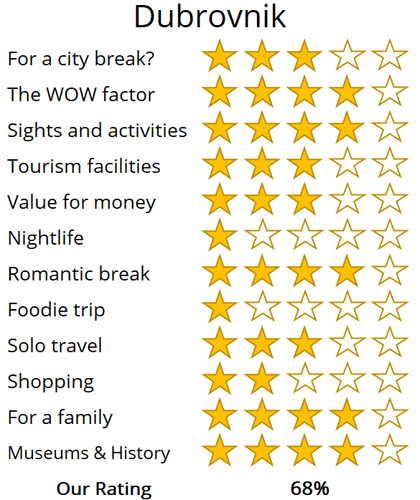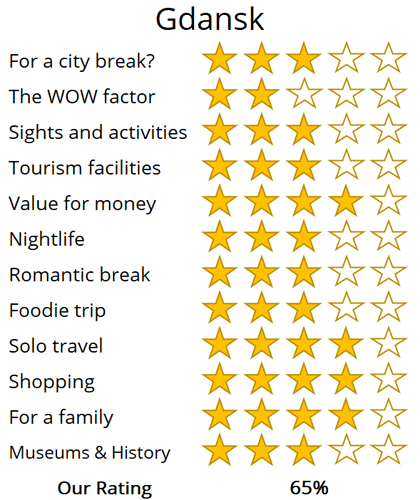WhereToGoForMyHoliday.com
The best destination comparison site!
WhereToGoForMyHoliday.com
The best destination comparison site!
Dubrovnik or Gdansk, which is better for your holiday in 2024?
Dubrovnik and Gdansk both offer unique and enticing experiences, but which one should you choose for your city break or holiday?
We recognise the difficulty in making this decision. While there is abundant information available on both destinations, clear guidance on which city better aligns with your travel preferences is often hard to find.
This article aims to provide an impartial comparison of Gdansk and Dubrovnik, and hopefully help you to choose the best city to visit.
The article is structured into several sections, each of which can be directly accessed through the following links:
• Introduction to the cities
• Scores and ratings
• Which one should I, friends, or family visit?
• When to visit and weather
• Who is the city suited for?
• The perfect 48hours (with map)
• Tourism details (where to stay? airport details?)
Introduction to Dubrovnik and Gdansk
Dubrovnik, a jewel of the Adriatic, beckons modern travellers with its sublime blend of medieval charm and contemporary allure. Encircled by iconic stone walls, this UNESCO World Heritage site offers a timeless journey through cobbled streets and baroque buildings, each telling tales of a rich, turbulent history.
Yet, beyond its historical treasures, Dubrovnik embraces the present with open arms, offering a plethora of chic restaurants, trendy boutiques, and vibrant nightlife. The stunning coastline, dotted with pristine (stone) beaches and crystal-clear waters, provides a tranquil escape from the city’s bustling heart.
For the discerning traveller seeking a blend of culture, history, and natural beauty, Dubrovnik stands unrivalled—a truly captivating destination.
Salt-washed, industrial-chic and filled with hipsters, Gdansk is one of the most happening cities in Poland. It sits on the edge of the Baltic Sea, proudly showcasing its merchant guilds and mansions, a leftover from the years when this was one of the richest ports in the Hanseatic League.
Like most Polish cities, the focal point is an immersive Old Town (also called the Main City) that beats with life and cafés and boutique shops. Around that's a newer city where the remnants of Communist rule still pop up in the tenement blocks and the famous dockyards where the Solidarity movement heralded the beginning of the end for the USSR in the 1980s.
On top of all the architecture and culture is a vibey bar scene that's powered by a hefty student population. There are clubs and pubs everywhere, from the open-air boats on the quaysides to the hidden basement bars in the old quarter. What's more, Gdansk is the gateway to the Polish coast, with Hel Peninsular and its oat-topped dunes close by, or the resort town of Sopot only a short train ride away.
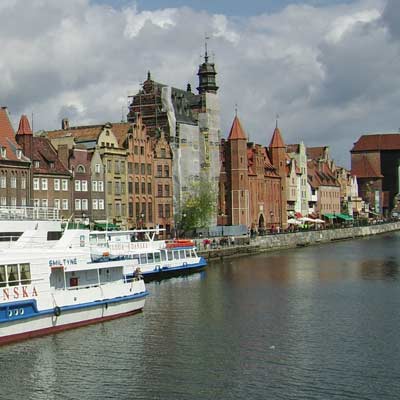
The scenic Długa waterfront in Gdansk
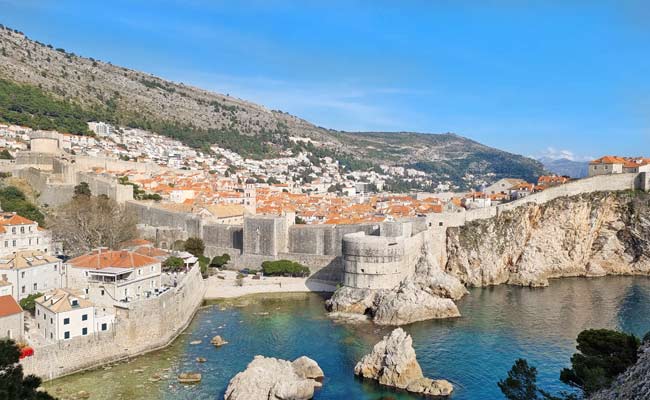
Dubrovnik is one of the most picturesque cities in Europe, so long as your happy to share the experience with thousands of other tourists.
High-level summary for Dubrovnik and Gdansk
Summary
Where would I journey for a personal escape?
Gdansk
Where would I send my parents for a memorable visit?
Dubrovnik
Where's the ideal destination for my adventurous 19-year-old cousin?
Gdansk
Where should my food-obsessed friend indulge their culinary passions?
Dubrovnik
Note: The above comparisons are weather-independent and are based on travel during the most opportune times of the year. Details about the ideal travel seasons are elaborated upon later in this article.
In the sections that follow, you'll find a comprehensive comparison between these two fascinating cities. This includes recommendations on the duration of stay, the best times to visit, and tailored 48-hour itineraries for each city.
The final segment delves into practicalities for your travels, such as the best airport to fly into, the optimal districts for your accommodation, and insider tips, for when you come to explore the city.
We hope that you find all of this information useful, in planning your next exciting trip!
Destination details
How long to spend each city?
Gdansk can be done in just a couple of days, but don't expect that to be enough to do everything. You'll likely want to linger longer, if only to beachcomb the Baltic coast, explore the other corners of the Tri-City (Gdansk is just one of three individual towns that are joined together), and sample as many of the cool hipster bars as you can.
Still, city breaks are very much doable here. Just 48 or 72 hours is ample for checking off the historic sights in the centre, the fascinating dockyards monuments, and to get a feel for the unique fusion of Slavic-Germanic architecture that abounds. Expect to do a lot of walking, though, and be ready to hop on inner-city trains and trams to get from A to B.
During the summertime, you could opt to do as thousands of Polish locals do and extend your Gdansk holiday to a week or two. That'll let you head out to the coast and the beaches. They can be surprisingly stunning, especially along the breezy Hel headland.
Choosing how long to spend in Dubrovnik really depends on what you want out of your city break. A fly-in whirlwind tour of the Old Town can be great if you're on the hunt for culture and history. The museum collections of the Sponza Palace and the Rector's House, walking routes of the City Walls, and sightings of landmarks like Large Onofrio Fountain can all be packed into just a day or two.
But it might be best to allow a little extra time. With all the castles and churches here, it's easy to forget that Dubrovnik is an Adriatic riviera destination at heart. You've got pine forests, olive groves, rakija distilleries and the lost-paradise island of Mljet to think about. You certainly won't want to rush those during the warmer months, so consider staying a week or more to explore the city itself and those stunning surroundings.
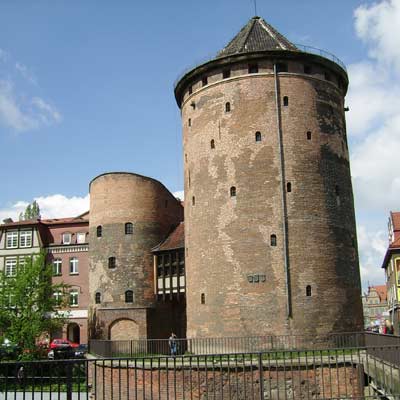
The Stągwie Mleczne was the ancient gateway to the southern side of Gdansk
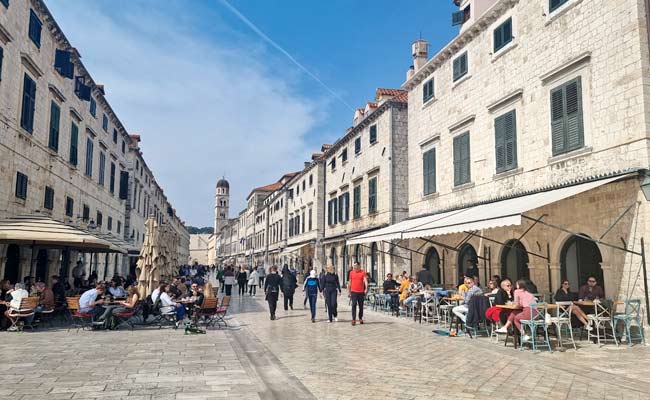
The Stradun is the characterful main street of Dubrovnik
Gdansk is surely at its best in the warmer months. Between May and September is when most travellers come. They get to enjoy all the al fresco bars along the old port. They can wander the Old Town without worrying (too much, at least) about rain. They can hit the open-air terraces to taste pierogi dumplings. The weather is a little milder than inland Poland thanks to the tempering effect of the Baltic Sea. Average highs in July are in the low 20s, but that's enough to bring crowds to the beaches of Sopot and the north coast.
The winter in Gdansk can be brutal. The Baltic magnetises icy storms and cold winds across the shoreline and the city. It's a time to get cosy in cute cafes and sip warm beers (yes, that's a thing here), but be certain to pack the thermal leggings and snow coats.
Summer might seem like the perfect time to put together a trip to Croatia's castle city. However, temperature highs in the low 30s and strong midday sun can make things a little tiring. And that's not even mentioning the whopping great big crowds. Recent protests by Dubrovnik's locals have really highlighted the problem of summertime tourism – there's hardly an inch to move in the Old Town, especially when huge cruise ships are docked at port.
Things might improve thanks to recent laws barring any more than two large vessels per day, but we still think September and October come up trumps. This southern corner of the Balkans stays pleasantly warm well into the autumn, so you shouldn't have to worry about having the weather to laze on Lapad Beach. What's more, visitor numbers, hotel rates, and flight prices all plummet following the end of the summer vacations.
Gdansk has got loads going for it on the travel front. Melding enthralling medieval history with sobering tales of wartime and the proud trade union movement, it's a gem for those looking to unravel the history of Central-Eastern Europe. Shoppers get to delve into Amber shops galore – the city is hailed as one of the best places in the world to buy the glowing fossil. Hedonists get everything from basement bars to wild clubs in old bunkers that stay open all night. Sightseers need only look to the historic Old Town and its grand churches and squares.
Adding to all that, Gdansk has beaches. A quick train to Sopot will reveal one of the nicest in the region, with a long pier that juts out into the Baltic. A little further and you can get to Puck, which sits at the base of what is arguably Poland's finest length of coastline.
If you're one for enthralling tales of warring republics and battles with the Ottomans, Dubrovnik has you covered. If you're the sort who loves jaw-dropping European old towns with enough castles and churches and cobbled alleys to keep you going for a whole trip, it's also perfect.
Oh, and Dubrovnik takes care of globetrotters who come in search of a little Mediterranean sand, sun and sea. You won't have to venture far to find a cove to swim in, a yacht charter, or even a remote island villa where you can crank up the R&R.
If you're not big on crowds, then summer trips (as noted above) to Dubrovnik are surely best avoided. And it's hardly the place for anyone in search of big-metropolis vibes. For a city, Dubrovnik is relatively small and compact.
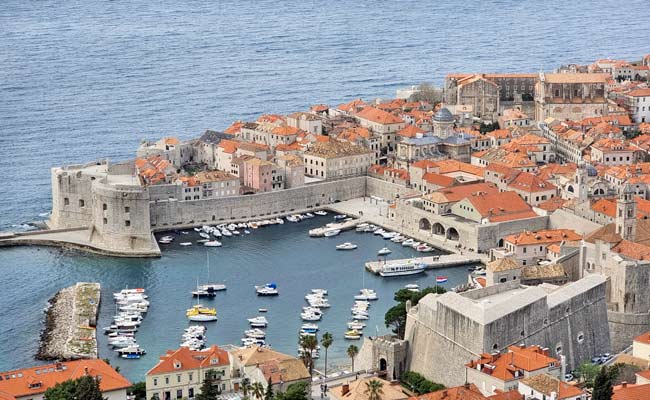
The pretty harbout of Dubrovnik
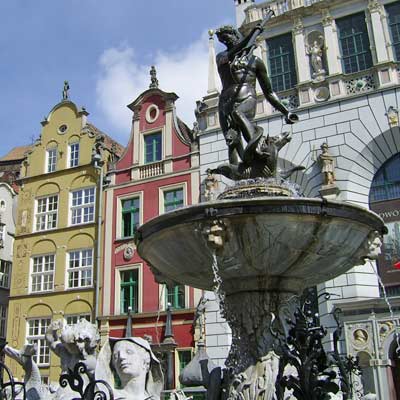
Neptune's Fountain in the historic centre of Gdansk
48hours in Dubrovnik
Hopping from crenulated towers overlooking the Adriatic Sea to hidden local swimming spots to soaring summits in the Dinaric Alps, this fun-filled 48 hours could just be the perfect introduction to this awesome city:
Day 1: Start – where else? – on buzzy Stradun. The main artery of the Old Town of Dubrovnik, it runs from the port to Pile Gate (a 16th-century stone gatehouse that's worth a photo stop), passing Irish pubs, coffee joints, and Croatian konoba (taverns) as it goes. Sip a cappuccino and devour a pastry there before making for the Large Onofrio Fountain.
An elaborate water feature that's stood since the 1430s, it still dispenses crystal-clear water for drinking. Fill the bottle and then move to the iconic City Walls. These can be traversed entirely.
You can choose to do them on a guided tour (a Game of Thrones tour is available) or by yourself. In all, the whole stroll takes around two hours from start to finish, covering two kilometres of fortifications that include glimpses of famous citadels like Fort Minčeta (1319) and the dungeon-like Fort Revelin (now home to an EDM nightclub – remember that for later!).
For the evening, retreat to the legendary Buža Bar. It gazes straight out southwards across the Adriatic Sea. You can watch locals diving from the rocks into the water as you sip your sundowner beer.
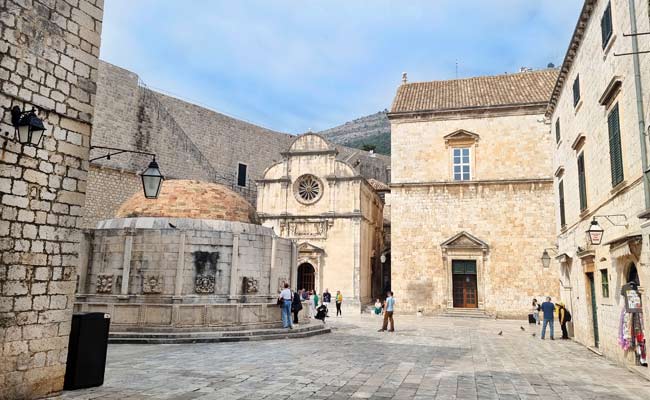
The Onofrijeva fountain and the towering city walls of Dubrovnik
Day 2: Kick start the day with a dip in the Med at Banje Beach. This is the closest beach to the Old Town of Dubrovnik and has a free section where you can take a quick swim while gawping at the high fortresses overhead.
Cafés and gelato shops line Frana Supila just above it, where you can grab a bite for breakfast before making for the base station of the Dubrovnik Cable Car – it's less than 500 metres away. Tickets might cost 170 HRK (€22) apiece, but the sweeping 180-degree views from the top station of Mountain Srd are simply awesome.
You'll be able to see the red-tiled roofs of the Old Town below, the wooded crags of Lokrum Island, and the remote Elaphiti Islands (perfect day outings by boat if you have some more time to spare) beyond.
Return to ground level and then hop on a bus going over to the Lapad Peninsula. This is great for the evening. A quick splash in the sea can be followed by uber-fresh seafood dinners with crisp Croatian wine in the traditional taverns just by the bay.
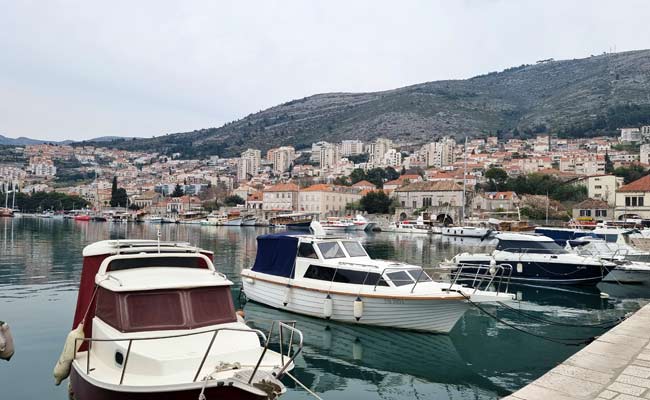
The New Town of Dubrovnik is centred around the harbour
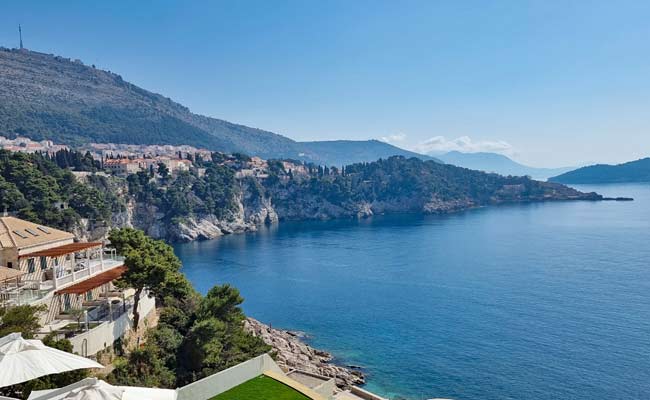
The dramatic coastline to the west of Dubrovnik Old town
48hours in Gdansk
Gdansk has big-name sights like the iconic dockyards and its Old Town. But it also has secrets up its millennia-old sleeve. This 48-hour itinerary covers both, with a little bit of partying and beachside living thrown in for good measure…
The interactive map below shows a suggested route for the 48 hours in Gdansk, with day 1 highlighted in green and day two in yellow.
Day 1: Make for Cafe Libertas for breakfast. It's a popular spot with fruit bowls and artisan coffee that will fuel you up right in the heart of the Old Town. Stepping outside the door, you'll find quaint Chlebnicka street, which you can stroll between grand townhouses with Flemish-inspired façades.
At one end is Chlebnicka Gate, still flaunting its original medieval crest from 1450. Beyond is the riverside and the iconic Żuraw Crane. Now a branch of the National Maritime Museum, it's a great detour to make if you want to learn all about the history of shipbuilding in Gdansk.
Delve back into the maze of streets to the west and try to find the St. Mary's Church. It shouldn't be difficult – it's among the three largest brick-built churches on the planet! Past that is bustling Długa. The main drag of the city, it's awash with amber shops, bars, eateries and more.
Stop to sample some pierogi dumplings or grab a beer, and then move on to lovely Long Market square. That's where the famous statue of Neptune beckons, hemmed in by pastel-painted guilds. As evening arrives, return to Długa or Piwna street for basement bars that gush with vodka and cheap beer.
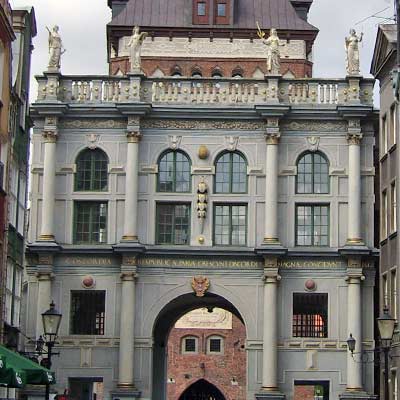
The Złota Brama (Golden Gate) is lined with figures depicting the qualities of the ideal citizen
Day 2: Morning of Day 2 takes you out to the legendary Gdansk Shipyards. If you haven't heard of these already, then buckle in for a history lesson in the fall of Communism. It was here, in 1980, that the powerful Solidarity movement first took route under the leadership of Lech Wałęsa. It would go on to fuel revolutions across the Eastern Bloc, which finished with the fall of the Berlin Wall and the end of Russian dominion in Europe.
There's nowhere better to uncover all that than at the European Solidarity Centre. A visit is likely to take a few hours, especially if you want to drop by the striking Monument to the Fallen Shipyard Workers of 1970 next door. For the afternoon, it's time to explore the Tri-City.
That means hopping on the SKM railway line from Gdańsk Główny. The ride to Sopot is only 15 minutes. It takes you to a lively resort area that's positively brimming with bars and eateries. It's also on the beach, so you might want to spend the evening here, moving between the music venues to famous Sopot Pier.

The European Solidarity Centre commemorates the Polish civil resistance and trade union which began in the Polish shipyards and ultimately led to the collapse of the communism in the USSR

Sopot has a beautiful beach and is an enjoyable destination during the summer season
Getting to Gdansk by plane is easy because of the countless short-haul and low-cost carriers that now fly into the local Lech Wałęsa Airport. A mere nine miles outside of the centre, you can get to the terminals on the 210 bus from the main train station. There are often problems with scam taxi fares to and from the airport, so always agree a rough price beforehand (the normal rate is between 60-80 PLN).
Gdansk's Main City is a joy to walk. The streets of Długa and the quays are all connected by loads of hidden alleys and paths. It might pay to have a tourist map at hand because getting lost is almost inevitable if it's your first time in town.
To travel to the beaches, the shipyards, and Sopot, you'll need to make use of the trams and inter-city SKM trains. The former cost 3.2 PLN per ride. Tickets are available from vending machines at most stations. Be sure to validate as you board.
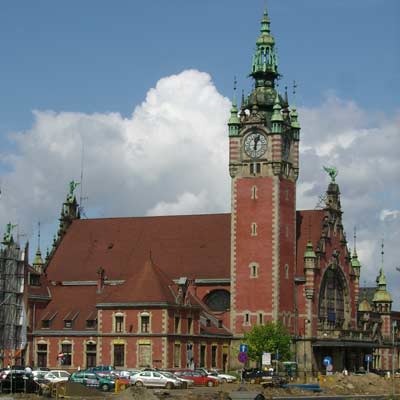
Gdansk Glowny - the main train station of Gdansk
The best location for a hotel in Gdansk is certainly in the Old Town area. There, you'll get boutique lodgings and stylish aparthotels set in centuries-old buildings. An alternative for those who favour beaches and nightlife would be to bed down in Sopot, where resort hotels with swimming pools and stylish restaurants are the norm.
Gdansk is among the most liberal and welcoming of Polish cities. It's got a vibrant LGBT scene and incidents of racism and crime are relatively rare. Still, there are still tensions in Poland and it's wise to be on your guard, especially if out at night in the bars of the Old Town.
You'll want to arrive and depart from Dubrovnik Airport if you're coming on a quick city break. It's located just over 15 kilometres from the heart of the city. Shuttles run regular routes from the Old Town and the Kantafig bus interchange to the airport terminals. The journey takes around 45 minutes to an hour in good traffic and costs between 35-55 HRK, depending on the operator you choose.
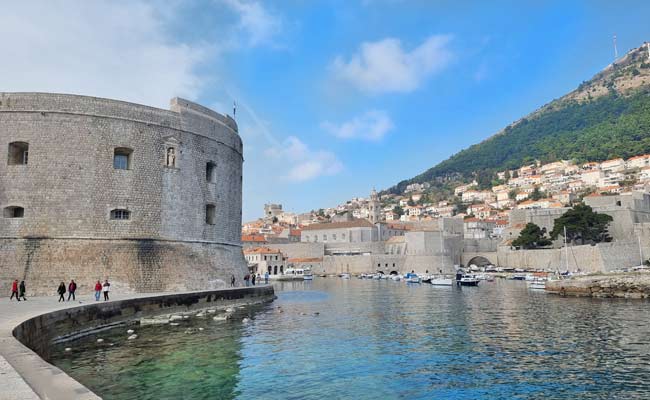
The entrance to Dubrovnik harbour
Dubrovnik is a super walkable city. In fact, getting lost in the Old Town area is one of the best things to do here. Don't go thinking you can use the City Walls to navigate. The ticket for those costs 200 HRK (€29) and is only valid for a single entry.
To get back and forth from districts around the Old Town and the beaches of Lapad and beyond, there's an efficient local bus network. Virtually all routes will either take you to the historic heart of Dubrovnik or terminate at the main Kantafig station. You can purchase fares onboard for 15 HRK but they're a little cheaper if bought from a kiosk in advance.
Try to seek out a place to stay as close to the Old Town as you can if you're coming to see the history sights and enjoy the walking tours. Remember that the district is super compact, so boutique B&Bs with cosy rooms are the name of the game within its boundaries. For extra space and proximity to the Adriatic Sea, you could look to the larger hotels and guesthouses around Banje Beach or Gruz to the north.

oh we were stuck in the airport!

Copenhagen was a bit expensive...

All we did was drink beer in Brussels...

Muncih was crazy

And we got so burnt!

Remeber that night in Rome

oh we were stuck in the airport

So much fun kayaking

Berlin and that group from Austria!

There was such a view from that church

And we got so burnt!

Munich was eventful, wasn't it!

Such a view from that cathedral in Florence

Lisbon was such so much fun

Last summer was so much fun .... x

Remeber that night in Rome

Lisbon was such so much fun

Such a view from that cathedral in Florence

Munich was eventful, wasn't it!

And we got so burnt!

Remeber that night in Rome

All we did was drink beer in Brussels...

Berlin and that group from Austria!

Can't wait to go back to Dubrovnik

Remember that boat ride in Prague

Copenhagen was a bit expensive...
